Enhanced Safety Clothing: Reflective & High-Visibility Gear
The Critical Role of Safety Clothing in Industrial Environments
In demanding industrial and public service sectors, the integrity of worker safety hinges significantly on reliable personal protective equipment (PPE). Among the most fundamental components is high-visibility safety clothing, which serves as a frontline defense against workplace hazards. This comprehensive guide delves into the nuances of modern safety apparel, from its manufacturing intricacies to its broad spectrum of applications, designed to inform B2B decision-makers on optimal procurement and deployment strategies.
Understanding the technical specifications, industry trends, and customization options available is crucial for ensuring compliance, enhancing operational efficiency, and, most importantly, safeguarding human lives. Our discussion covers the evolution of safety garments, emphasizing advancements in materials and design that contribute to superior visibility and protection in diverse work settings.

Current Industry Trends in High-Visibility Apparel
The landscape of high-visibility apparel, including reflective safety clothing, is continuously evolving, driven by technological advancements, regulatory updates, and a growing emphasis on worker comfort and sustainability. Key trends influencing the market include:
- Smart Textiles Integration: The incorporation of smart technologies, such as embedded sensors for vital sign monitoring or GPS tracking, is emerging, enhancing worker safety beyond mere visibility. These innovations provide real-time data, enabling proactive safety measures.
- Sustainable Materials: There's a growing push towards eco-friendly and recycled materials in the production of safety clothing, addressing environmental concerns without compromising performance. Biodegradable components and sustainable manufacturing processes are gaining traction.
- Enhanced Durability and Comfort: Manufacturers are focusing on developing materials that offer superior tear and abrasion resistance while maintaining breathability and flexibility. This directly contributes to a longer service life and improved worker acceptance, especially for gear like orange reflective safety clothing worn for extended periods.
- Customization and Branding: Beyond standard sizes and colors, there's an increasing demand for highly customized solutions, including corporate branding, specialized pocket configurations, and specific color requirements to align with company aesthetics or particular hazard warnings.
- Improved Retroreflectivity: Continuous advancements in reflective materials lead to higher retroreflectivity ratings and enhanced durability of reflective components, ensuring optimal visibility in low-light conditions and extending the effective life of the garment.
These trends underscore a holistic approach to worker safety, integrating advanced functionality with traditional protective elements to meet the complex demands of modern industrial environments.
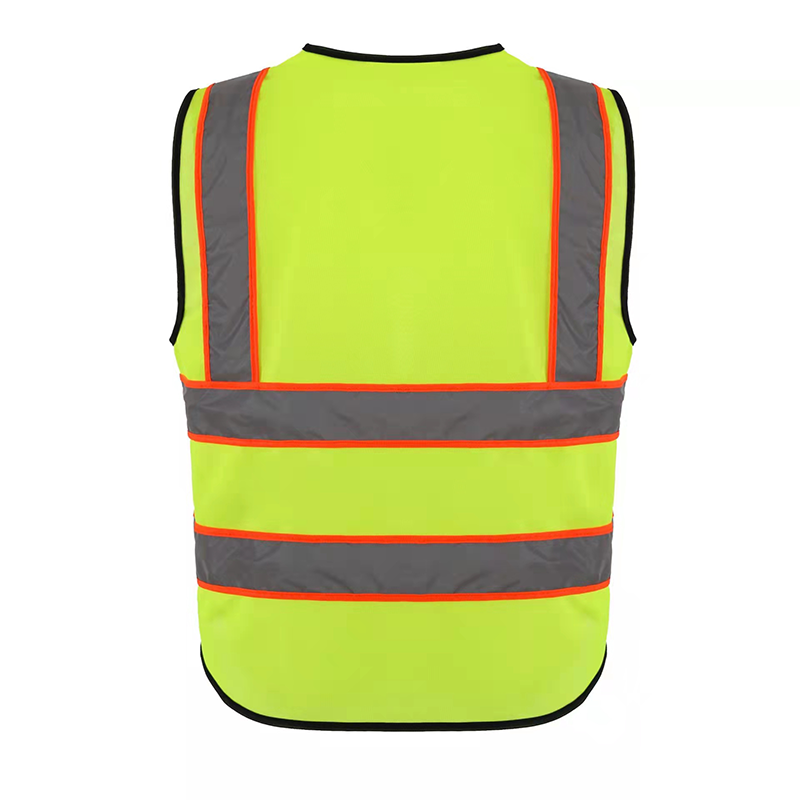
Manufacturing Process Flow for High-Visibility Garments
The production of high-quality safety clothing involves a precise, multi-stage manufacturing process designed to meet rigorous safety standards and performance expectations. Our OEM printing logo personalized reflective safety vests exemplify this meticulous approach:
1. Material Selection & Sourcing
The foundation of durable reflective safety clothing lies in material selection. We typically utilize high-quality, lightweight yet robust polyester fabric (e.g., 120gsm knit fabric) for the vest body. Reflective materials, crucial for retroreflectivity, often comprise micro-prismatic or glass bead technology, certified to global standards like ANSI/ISEA 107 or EN ISO 20471. Materials are chosen for their durability, colorfastness (e.g., fluorescent yellow/orange), and comfort.
2. Pattern Design & Cutting
Precision patterns are developed using CAD software, optimizing material usage and ensuring consistent sizing. Automated CNC cutting machines then accurately cut the polyester fabric panels and reflective tape segments. This minimizes waste and ensures uniform component dimensions, critical for garment integrity.
3. Printing & Embellishment (OEM Customization)
For personalized vests, corporate logos, text, or specific designs are applied through various printing techniques such as screen printing, heat transfer, or sublimation. This stage ensures brand visibility while maintaining the vest's reflective properties. The choice of printing method depends on design complexity, material compatibility, and required durability.
4. Assembly & Sewing
Skilled operators meticulously assemble the cut fabric panels, attaching reflective tapes and optional features like pockets or closures (e.g., Velcro or zippers). Industrial sewing machines ensure robust seams, critical for garment longevity and structural integrity. Stitching standards comply with industrial strength requirements.
5. Quality Control & Testing Standards
Every batch of safety clothing undergoes stringent quality control. Key tests include:
- Retroreflectivity Testing: Conforming to ANSI/ISEA 107 (Class 2 or 3) or EN ISO 20471 (Class 1, 2, or 3) standards, ensuring effective visibility.
- Colorfastness: Ensuring the fluorescent color remains vibrant after repeated washing and exposure.
- Tensile Strength: Testing fabric and seam strength to withstand typical wear and tear.
- Dimensional Stability: Checking for shrinkage or distortion after washing.
- Flammability (if applicable): For specific applications, materials are tested for flame resistance.
These tests ensure products meet international safety and quality benchmarks, contributing to a typical service life of 25-50 wash cycles or approximately 6-12 months under normal industrial use, depending on specific job demands and maintenance.
Target Industries & Advantages:
Our safety clothing solutions are vital for industries such as:
- Petrochemical: Protecting workers in hazardous environments where visibility is often compromised by complex structures and equipment. Advantages include compliance with strict safety protocols and enhanced worker identification.
- Metallurgy: Ensuring visibility in high-heat, dusty, and often low-light conditions around heavy machinery. Advantages include improved incident prevention and worker confidence.
- Water Supply & Drainage: Providing essential visibility for maintenance crews working near roadsides, in confined spaces, or during adverse weather conditions. Advantages include significant reduction in vehicle-related incidents.
- Construction & Road Work: The primary sector for reflective safety clothing, where continuous interaction with traffic and heavy equipment necessitates maximum visibility. Advantages include direct energy saving by preventing costly accidents and corrosion resistance in challenging outdoor environments.

Technical Specifications of OEM Reflective Safety Vests
Our OEM printing logo personalized reflective safety vests are engineered to deliver optimal visibility and durability, meeting stringent international standards. Below are the typical technical parameters for a high-quality product in this category:
| Parameter | Specification | Compliance/Standard |
|---|---|---|
| Main Fabric | 100% Polyester Warp-Knitted Fabric | EN 340 General Requirements |
| Fabric Weight | 120 GSM (Grams per Square Meter) | Industry Standard for Lightweight PPE |
| Fluorescent Color | Fluorescent Yellow, Fluorescent Orange, Fluorescent Red | ANSI/ISEA 107, EN ISO 20471 (Chromaticity & Luminance) |
| Reflective Material | High-intensity Silver Reflective Tape (e.g., PVC or Polyester) | ANSI/ISEA 107 (Min. 50 mm width, 300-500 cd/lux/m²) |
| Reflective Tape Width | 5 cm (2 inches) | ANSI/ISEA 107, EN ISO 20471 Standard |
| Closure Type | Velcro, Zipper, or Snap Buttons | User Preference & Application Specific |
| Visibility Class | ANSI/ISEA 107 Class 2 or 3; EN ISO 20471 Class 2 or 3 | Dependent on total background and reflective material area |
| Customization | OEM Logo Printing, Custom Pockets, ID Holders | Client Specific Requirements |
| Wash Durability | 25-50 Wash Cycles at 40°C | ISO 6330 |
| Certification | CE, EN ISO 20471, ANSI/ISEA 107, OEKO-TEX 100 | Third-Party Tested & Verified |
These specifications ensure that our safety clothing provides reliable performance and long-term value in the most demanding work environments, directly contributing to compliance with occupational health and safety regulations.
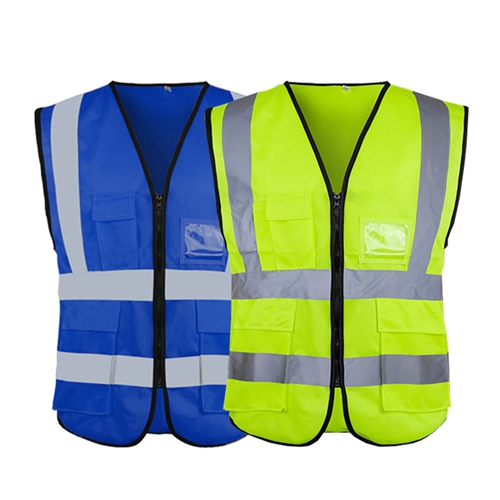
Application Scenarios for Reflective Safety Clothing
The utility of reflective safety clothing extends across a multitude of industries where workers operate in conditions of limited visibility, often near moving vehicles or machinery. Proper deployment of this PPE is critical for accident prevention.
- Road Construction & Maintenance: Workers on highways, urban roads, or any construction site adjacent to active traffic lanes rely heavily on orange reflective safety clothing to be seen by drivers, especially during dawn, dusk, or nighttime operations.
- Railway Operations: Personnel working on or near railway lines require high-visibility gear to stand out against complex backgrounds and in all weather conditions, ensuring they are detectable by train operators.
- Airport Ground Crew: Ground handling staff, baggage handlers, and maintenance teams operate in vast, often busy areas with moving aircraft and ground vehicles. High-visibility apparel is indispensable for their safety.
- Emergency Services: Police, firefighters, paramedics, and rescue teams often respond to incidents in unpredictable and hazardous environments, day or night. Their safety clothing must provide immediate and unmistakable visibility.
- Logistics & Warehousing: Employees operating forklifts, pallet jacks, and other material handling equipment in busy warehouses or distribution centers benefit from high-visibility apparel, reducing the risk of collisions.
- Utility Services: Technicians and engineers working on power lines, gas pipelines, or water infrastructure often find themselves in roadside environments or dimly lit trenches, making safety clothing a vital protective measure.
In each scenario, the objective remains the same: to minimize the risk of accidents by maximizing worker visibility, thereby contributing to a safer and more efficient operational environment. Feedback from various sectors consistently highlights the direct correlation between appropriate PPE and reduced incident rates.

Technical Advantages of Modern Safety Apparel
Contemporary safety clothing offers a range of technical advantages that extend beyond basic visibility, contributing significantly to overall worker well-being and operational effectiveness.
- Superior Retroreflectivity: Utilizing advanced micro-prismatic or encapsulated lens technology, modern reflective tapes offer significantly higher coefficients of retroreflection compared to older materials. This ensures light is returned efficiently to its source, making workers visible from greater distances and wider angles, crucial for preventing accidents involving fast-moving vehicles.
- Enhanced Material Durability: Fabrics are engineered for increased resistance to tears, abrasions, and punctures, extending the garment's service life even in rugged industrial settings. UV inhibitors are often integrated to prevent color fading of fluorescent materials, ensuring long-term compliance with visibility standards.
- Comfort and Breathability: Lightweight, breathable mesh fabrics and moisture-wicking properties are common, reducing heat stress and improving worker comfort in warm climates or during strenuous activities. This encourages consistent wear, a critical factor in PPE effectiveness.
- Chemical and Flame Resistance: Specialized safety clothing, particularly for petrochemical or welding industries, incorporates materials treated for chemical splash protection or flame resistance (FR). These garments provide multi-hazard protection, safeguarding against thermal incidents and corrosive substances.
- Compliance with International Standards: Adherence to internationally recognized standards such as ANSI/ISEA 107 (North America) and EN ISO 20471 (Europe) ensures that the clothing meets strict criteria for design, material performance, and test methods. This guarantees a baseline of quality and safety for global operations.
- Ease of Maintenance: Many modern high-visibility garments are designed for industrial laundering, maintaining their reflective and fluorescent properties through numerous wash cycles. This simplifies maintenance protocols and reduces replacement costs.
These technical advantages collectively contribute to a safer workforce, reducing incident rates, mitigating potential liabilities, and ultimately fostering a more productive work environment. The investment in technically superior safety clothing yields significant returns in human safety and operational continuity.
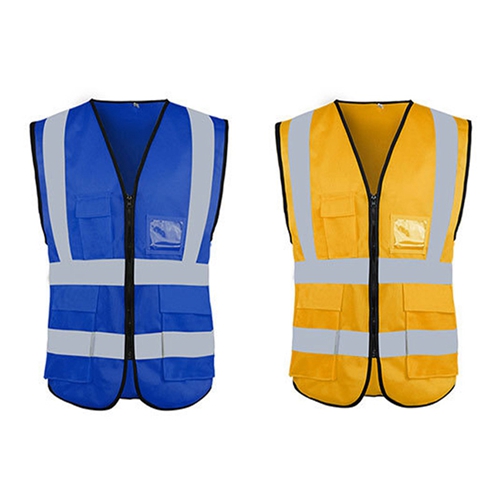
Vendor Comparison: Selecting Your Safety Clothing Partner
Choosing the right supplier for safety clothing is a strategic decision that impacts worker safety, regulatory compliance, and budget efficiency. When comparing vendors, particularly when considering options like reflective safety clothing china manufacturers, several critical factors must be evaluated.
| Feature/Factor | High-Quality / Specialized Vendor (e.g., GoodSafetyHelmet) | Generic / Mass-Market Vendor |
|---|---|---|
| Certifications & Compliance | Multiple international certifications (ANSI/ISEA 107, EN ISO 20471, OEKO-TEX 100). Third-party audited. | Basic certifications, or claims without verifiable third-party audits. May lack specific regional compliance. |
| Material Quality & Durability | Premium polyester fabrics (120-150gsm), high-grade reflective tapes (micro-prismatic), rigorous testing for wash cycles and UV resistance. | Standard polyester (often thinner), basic glass bead reflective tapes, less emphasis on long-term durability. |
| Customization Capabilities | Extensive OEM/ODM support, custom logo printing (screen, heat transfer, sublimation), bespoke designs, diverse size ranges, specialized features. | Limited customization, basic logo embroidery/printing, restricted sizing, few additional features. |
| Lead Time & Fulfillment | Streamlined production (e.g., 15-25 days for custom orders), efficient logistics, clear communication on timelines. | Potentially longer or inconsistent lead times, less transparency, reliance on standard inventory. |
| After-Sales Support & Warranty | Comprehensive warranty (e.g., 1-year product defect), dedicated customer service, easy returns/exchanges for quality issues. | Limited or unclear warranty policies, often slower or less responsive support. |
| Pricing Structure | Competitive pricing reflecting higher quality and service, value-driven, transparent breakdown of costs. | Lower initial cost, but potentially higher long-term replacement costs due to inferior durability. |
A specialized vendor, like those excelling in buy reflective safety clothing, offers not just a product but a partnership, ensuring that the supplied PPE consistently meets the high demands of industrial safety and regulatory requirements. This focus on quality, certification, and customization often translates into superior long-term value, even if the initial unit cost is slightly higher.

Customized Solutions for Organizational Safety Needs
Recognizing that no two industrial operations are identical, our approach to safety clothing extends to providing comprehensive customized solutions. Tailored PPE not only enhances safety but also reinforces corporate identity and improves worker morale.
1. OEM Printing & Branding
We specialize in OEM (Original Equipment Manufacturer) services, allowing clients to integrate their corporate logos, specific branding, or departmental identifiers onto the reflective safety clothing. This can be achieved through various high-durability methods:
- Screen Printing: Ideal for vibrant, solid-color logos, offering excellent durability and cost-effectiveness for larger orders.
- Heat Transfer Printing: Suitable for complex designs, multi-color logos, or reflective transfers, providing a smooth finish.
- Sublimation Printing: Best for full-color, intricate designs that integrate seamlessly into the fabric, offering breathability and no tactile difference.
2. Design Modifications & Feature Integration
Beyond branding, we offer ODM (Original Design Manufacturer) capabilities for modifying existing garment designs or developing entirely new solutions based on specific functional requirements:
- Pocket Configurations: Adding specialized pockets for tools, radios, ID badges, or mobile devices to enhance worker efficiency.
- Closure Types: Offering options like heavy-duty zippers, snap buttons, or adjustable Velcro for different levels of security and ease of use.
- Material & Color Specificity: Sourcing specific fabric weights, weaves, or color shades (e.g., specific orange reflective safety clothing tones) to match existing uniforms or environmental demands.
- Multi-Hazard Protection: Integrating features for flame resistance, anti-static properties, or water repellency into high-visibility garments for comprehensive protection.
- Sizing & Fit: Developing custom size charts or offering extended sizing to ensure optimal fit and comfort for all team members, enhancing mobility and safety.
Our expert team works closely with clients to understand their unique operational challenges and regulatory requirements, translating them into bespoke safety clothing solutions that are both protective and practical.
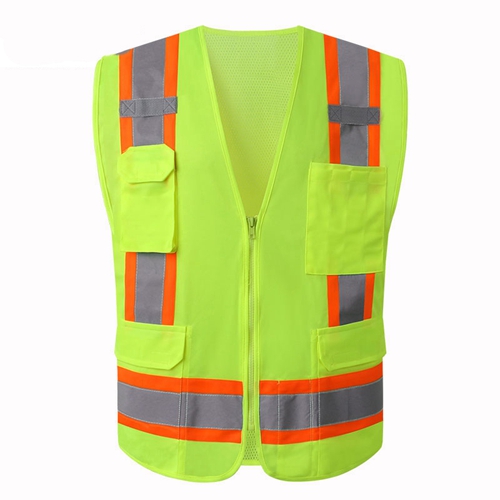
Application Case Studies: Real-World Impact
The effectiveness of high-quality safety clothing is best demonstrated through its real-world application, showcasing tangible improvements in worker safety and operational efficiency.
Case Study 1: Large-Scale Infrastructure Project (Roadway Construction)
A major national construction firm undertaking a multi-year highway expansion project faced challenges with worker visibility, particularly during night shifts and in adverse weather. After implementing our custom-designed, ANSI/ISEA 107 Class 3 certified reflective safety clothing, featuring high-intensity reflective tapes and durable fluorescent orange fabric, they reported:
- A 40% reduction in near-miss incidents involving vehicles and personnel within the work zone over a 12-month period.
- Improved compliance with site safety regulations, noted during independent audits.
- Enhanced worker confidence and comfort, leading to increased productivity during night operations.

Case Study 2: Port and Logistics Terminal
A busy international shipping port required robust safety clothing for its dockworkers, who interact daily with heavy machinery, cranes, and moving cargo in various lighting conditions. Our solution involved supplying highly durable, custom-branded reflective safety clothing china sourced vests and jackets, designed for prolonged outdoor exposure and frequent industrial washing. Key outcomes included:
- A significant decrease (25%) in workplace incidents related to poor visibility over two years.
- Extended garment lifespan, reducing procurement frequency and overall PPE expenditure.
- Positive feedback from workers regarding improved comfort and functionality (e.g., strategically placed pockets for communication devices).
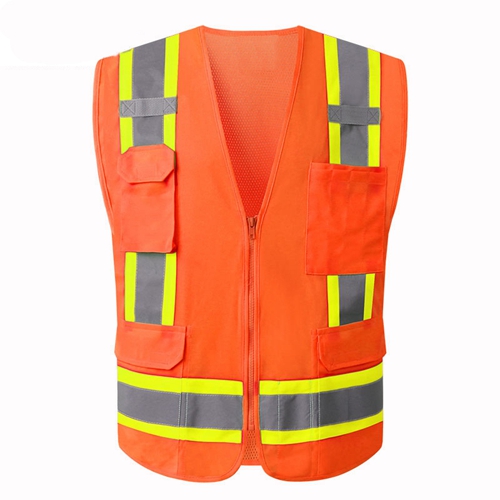
Case Study 3: Utility Maintenance Crews
A regional utility company needed safety clothing that could withstand exposure to various elements while ensuring maximum visibility for its field maintenance teams. We provided specialized orange reflective safety clothing with water-resistant properties and enhanced durability, tailored for utility work. Results observed:
- Improved safety ratings for roadside work and emergency repairs during inclement weather.
- Reduced worker complaints regarding discomfort, leading to higher rates of PPE adherence.
- Streamlined inventory management due to the reliability and consistent quality of the supplied garments.

Frequently Asked Questions (FAQ)
Addressing common inquiries regarding safety clothing can help B2B clients make informed decisions.
Q1: What is the primary difference between ANSI/ISEA 107 and EN ISO 20471 standards?
A1: Both are international standards for high-visibility safety clothing. ANSI/ISEA 107 is primarily used in North America, while EN ISO 20471 is widely adopted in Europe and globally. They differ in specific test methods, minimum areas for fluorescent and reflective materials, and classification systems (e.g., Class 1, 2, 3 for both, but with distinct area requirements).
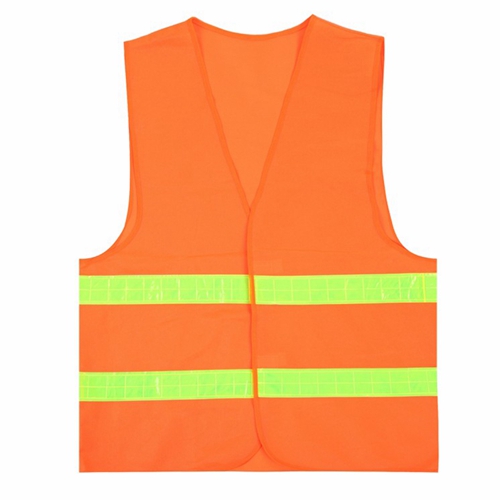
Q2: How do I choose the correct visibility class for my workers?
A2: The required visibility class (e.g., Class 2 or 3) depends on the work environment's complexity, traffic speed, and proximity to hazards. For example, Class 2 is suitable for workers near roadways with speeds up to 50 mph, while Class 3 is mandatory for workers in high-speed traffic (above 50 mph) or complex environments requiring maximum visibility.

Q3: What affects the service life of reflective safety clothing?
A3: Several factors impact service life: frequency of use, exposure to harsh environmental conditions (UV, chemicals), washing procedures, and material quality. Adhering to care instructions and performing regular inspections can maximize garment lifespan, typically 6-12 months for vests under heavy use, or 25-50 industrial washes.
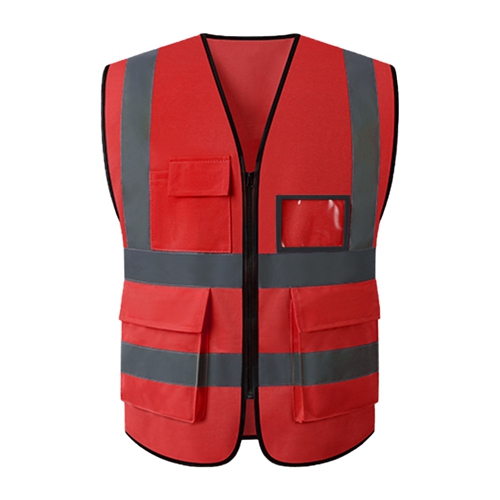
Q4: Can these vests be custom-branded with our company logo?
A4: Absolutely. We offer comprehensive OEM services, including screen printing, heat transfer, and sublimation, to apply your company logo, text, or specific designs onto the vests while ensuring the visibility performance is not compromised. Our team assists in selecting the best method for your design and durability requirements.
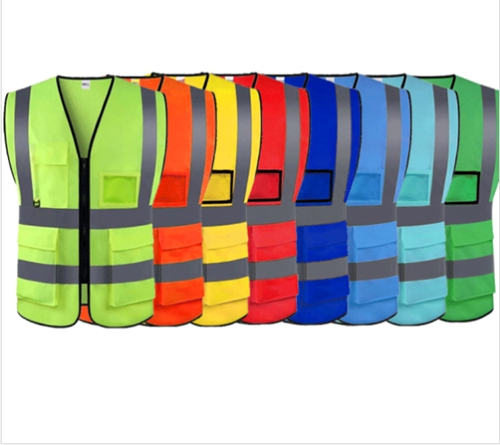
Lead Time, Fulfillment & Warranty Commitments
We understand that reliable and timely delivery of PPE is critical for operational continuity. Our commitment extends beyond product quality to encompass efficient logistics and comprehensive after-sales support.
Lead Time & Fulfillment:
- Standard Orders: For in-stock items, lead times are typically 7-14 business days, depending on order volume and shipping destination.
- Customized Orders (OEM/ODM): Production for personalized safety clothing, including logo printing and design modifications, generally ranges from 15-25 business days after artwork approval. This timeframe may vary based on order complexity and quantity.
- Shipping & Logistics: We partner with reputable global carriers to ensure timely and secure delivery. Expedited shipping options are available upon request for urgent requirements. Detailed tracking information is provided for all shipments.
- Minimum Order Quantity (MOQ): Our MOQs are flexible to accommodate various client needs, from small-batch customization to large-scale procurement. Please contact us for specific requirements.
Warranty Commitments:
We stand behind the quality and craftsmanship of our reflective safety clothing with a robust warranty program:
- Product Warranty: All our high-visibility garments are covered by a 12-month warranty against manufacturing defects from the date of purchase. This includes defects in materials, stitching, and reflective tape adhesion under normal use and care conditions.
- Compliance Guarantee: We guarantee that all products claiming specific certifications (e.g., ANSI/ISEA 107, EN ISO 20471) meet the stated performance requirements as verified by third-party testing.
- Exclusions: The warranty does not cover damage resulting from misuse, improper care, accidents, unauthorized modifications, or normal wear and tear beyond the expected service life.
Customer Support:
Our dedicated customer support team is available to assist with any inquiries, from product selection and customization to order status and warranty claims.
- Pre-Sales Consultation: Expert advice on product specifications, customization options, and compliance requirements.
- Order Management: Transparent communication throughout the order process, from confirmation to delivery.
- After-Sales Service: Prompt assistance with any product-related issues, including returns, replacements, and technical support. Our goal is to ensure complete customer satisfaction and long-term partnership.
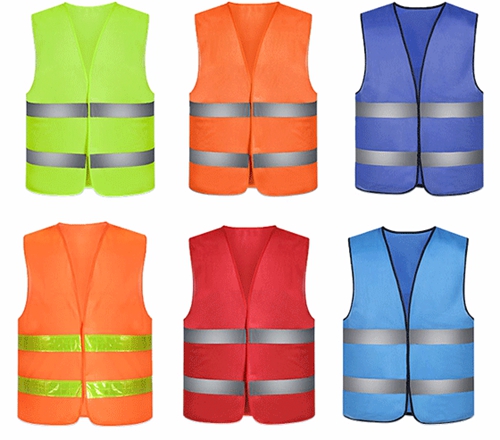
Conclusion
The strategic procurement and deployment of high-quality safety clothing are paramount for any organization committed to safeguarding its workforce and upholding operational excellence. By focusing on advanced materials, adherence to global safety standards, and robust customization capabilities, businesses can ensure their personnel are adequately protected in the most challenging industrial environments. Investing in certified, durable, and comfortable reflective safety apparel is an investment in human capital, directly contributing to reduced accident rates, improved compliance, and enhanced overall productivity.
References
- American National Standards Institute (ANSI) / International Safety Equipment Association (ISEA). ANSI/ISEA 107-2020: American National Standard for High-Visibility Safety Apparel and Accessories.
- International Organization for Standardization (ISO). EN ISO 20471:2013+A1:2016: High-visibility clothing - Test methods and requirements.
- Occupational Safety and Health Administration (OSHA). 29 CFR Part 1926, Subpart G: Personal Protective and Life Saving Equipment.
- European Agency for Safety and Health at Work (EU-OSHA). Personal Protective Equipment: The basics.
- 3M. Reflective Material Technology & Applications Guide.
-
Safety Helmet for Toddler: Protecting Little Explorers Worldwide
NewsNov.25,2025
-
Essential Guide to Safety Helmets for the Oil and Gas Industry
NewsNov.24,2025
-
Essential Guide to Safety Helmet for Baby – Protect Little Explorers with Confidence
NewsNov.24,2025
-
Comprehensive Guide to Safety Helmet Factory – Global Insights & Innovations
NewsNov.23,2025
-
Rockman Safety Helmet: Ultimate Industrial Head Protection Guide
NewsNov.23,2025
-
Race Safety Helmet – Essential Protection for Motorsport Champions
NewsNov.22,2025
